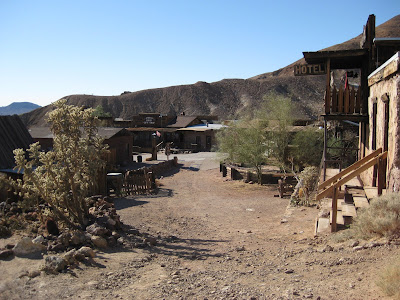
In January 1881, the first silver claim was staked in the Calico Mountains near Barstow, California. Almost overnight, a community sprung up in the middle of the Mojave Desert, populated by growing numbers of restless dreamers from across the globe. There were fortune-seekers from back east as well as Mexico, Europe, Australia and China, and all of them were restless enough to work 10-hour days in extreme conditions. Some even continued working at night, by firelight, hoping against hope that a better life was just a few inches away.
Within a year, the Calico Mining District had its own newspaper, connecting the new community to the outside world. Following a spring flood that washed the earliest settlers out of Wall Street Canyon, a business district formed on a narrow bench of land sitting directly below King Mountain. There were two attorneys, a notary public, a shoemaker, seven saloons, an assayer, a livery stable, a druggist, a post office, a doctor’s office, restaurants, public boarding houses and hotels. At the time, most of Calico’s homes were no more than tents or frame. Water was scarce. Public sanitation was non-existent. Cave-ins, explosions, accidents and asphyxiation eventually killed most of the men in Calico. 90% of them worked in the mines. The only work for women was prostitution.
The first schoolhouse was built in 1882. Over the next 17 years, it served anywhere from 3 to 36 kids at a time, as the population of the town waxed and waned. The first silver strike occurred on December 15, 1883. In that same year, borax was discovered in the hills beyond the town. In 1884, a fire burned most of the town’s buildings. Calico was rebuilt and a town hall was added in 1885, at the peak of the silver boom years. Everything was destroyed again by a bigger fire in 1887.
A recession in the spring of 1893 caused a dramatic fall in the price of silver. For Calico, it seemed like a death blow. By the end of the decade, even the schoolhouse had closed its doors. At the turn of the 20th century, there were probably only a few dozen people still living in the town. Those who stuck around long enough saw a few short years of heavy borax mining. In 1905 and 1906, workers hauled 3,900 tons of borax per month out of the mines. In 1907, the mines closed for good and Calico withered as quickly as it had come into existence.
Today, the restored ghost town of Calico stands as a testament to the hundreds of towns just like it that lived hard and died quietly.









No comments:
Post a Comment